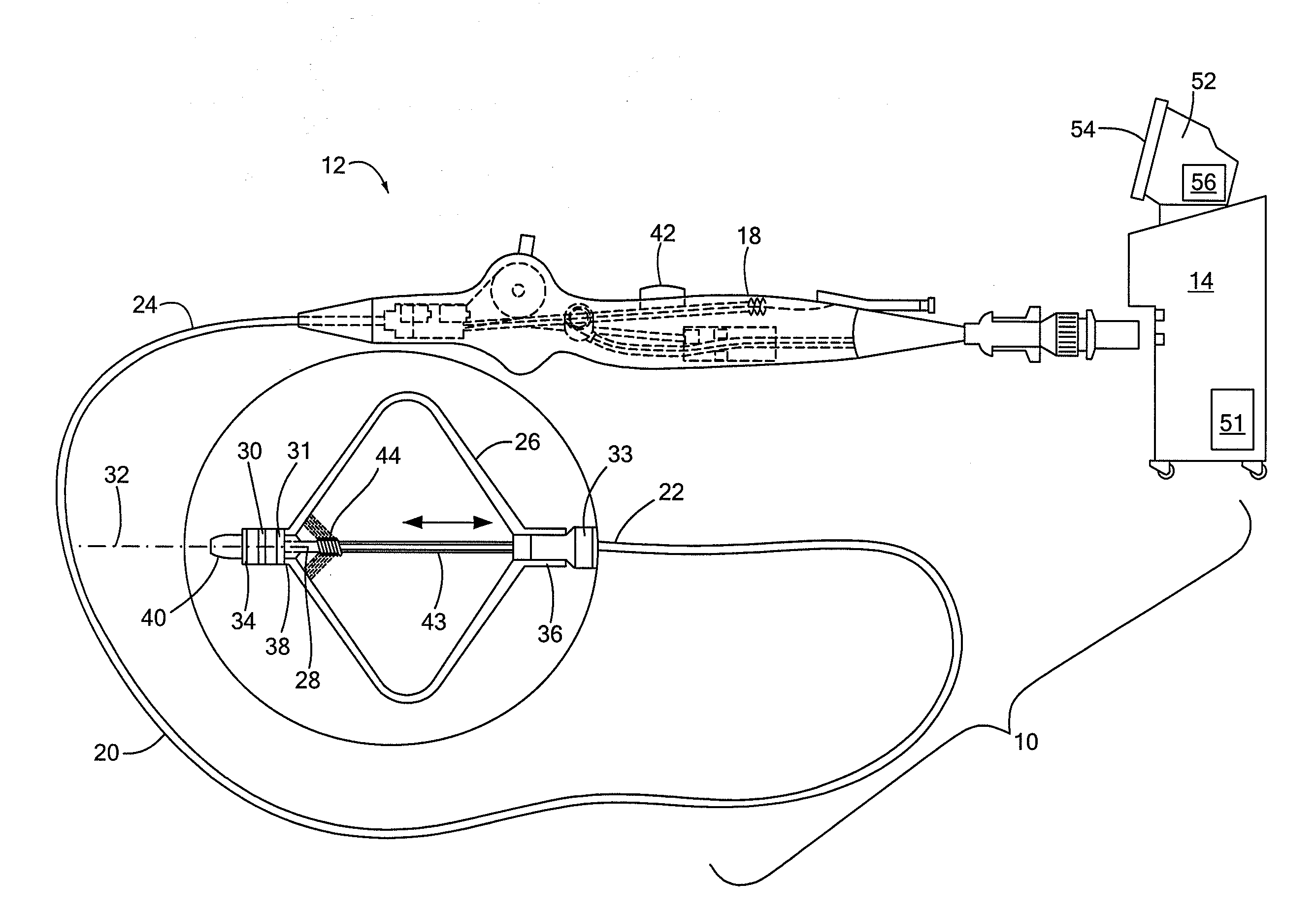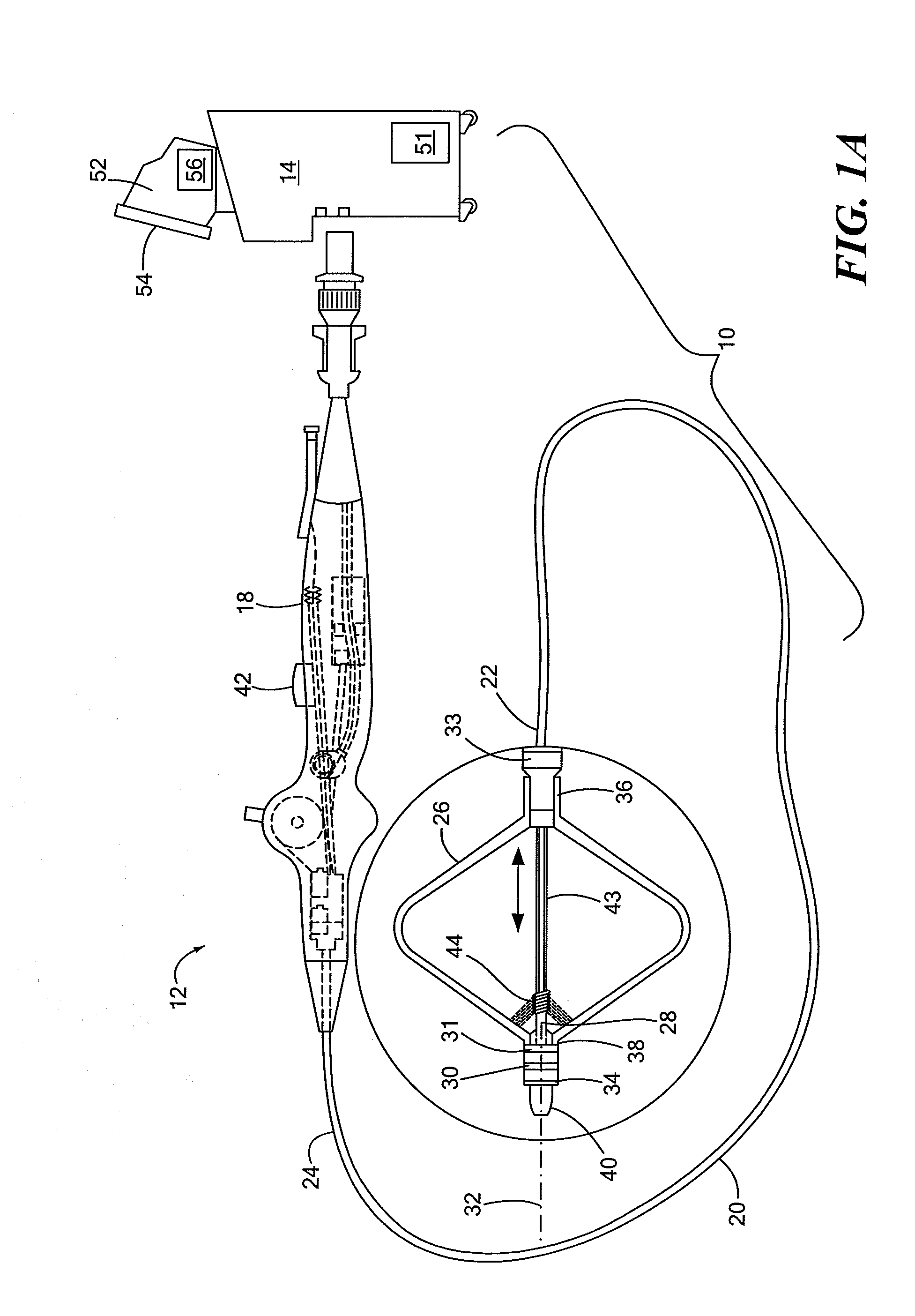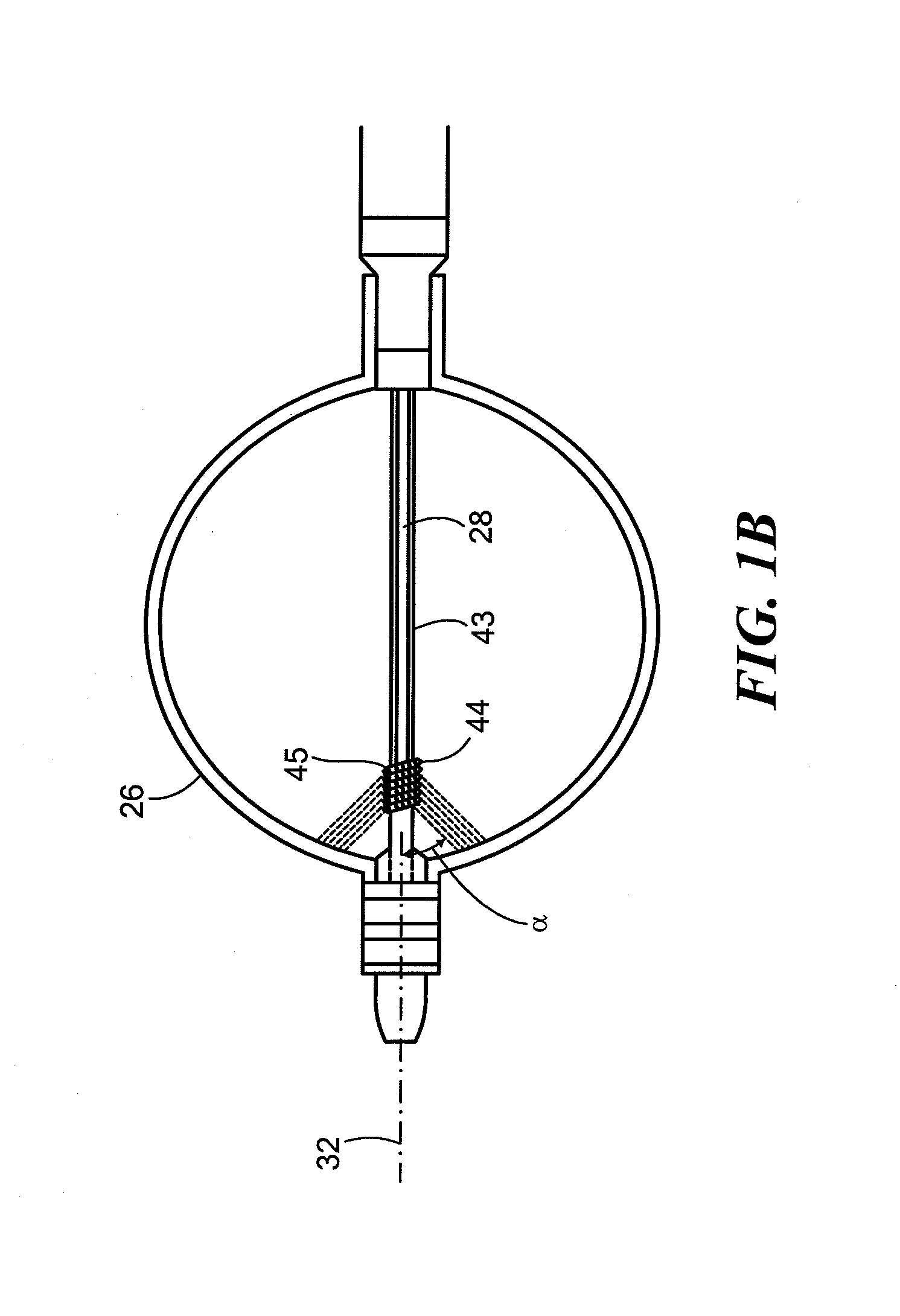Distal balloon impedance and temperature recording to monitor pulmonary vein ablation and occlusion
a technology which is applied in the field of pulmonary vein ablation and temperature recording, can solve the problems of insufficient electrical isolation of reversible lesions, low temperature of cryoballoons, and insufficient creation of reversible lesions, so as to achieve real-time and accurate assessment and monitoring, and accurately monitor the formation of lesions
- Summary
- Abstract
- Description
- Claims
- Application Information
AI Technical Summary
Benefits of technology
Problems solved by technology
Method used
Image
Examples
first embodiment
[0034]Referring now to FIG. 2, a close-up view of the distal portion of the cryoballoon catheter is shown. As shown and described in FIGS. 1A and 1B, the cryotreatment device 12 may include one or more distal electrodes 30 and one or more proximal electrodes 31. The device 12 may further include a reference electrode 33 and one or more thermocouples 34 if the electrodes 30, 31 are not configured to measure temperature. The electrodes 30, 31, 33 may be composed of an electrically conductive material suitable for sensing impedance and, optionally, temperature. In the embodiment shown in FIGS. 1A-2, both electrodes 30, 31 and thermocouple 34 may be located distal to the cryoballoon 26. Electrodes 30, 31, 33 and thermocouple 34 may be coupled to, affixed to, disposed about, integrated with, or otherwise located on a distal portion of the device 12. The proximal electrode 31 may be located immediately distal to the cryoballoon 26, such as on the shaft distal portion 40. For example, the ...
second embodiment
[0036]Referring now to FIG. 4, a close-up view of the distal portion of a cryoballoon catheter is shown. The embodiment shown in FIG. 4 is generally similar to those shown in FIGS. 1A-3. Like the embodiment shown in FIGS. 1A-3, the cryotreatment device 12 shown in FIG. 4 may include a proximal electrode 31 that is located proximal to the cryoballoon 26. Instead of a distal electrode 30, however, the device 12 may include a plurality of discrete electrodes 58A, 58B, 58C, . . . radially disposed about the shaft distal portion 40 immediately distal to the cryoballoon 26. For example, each electrode 58 may be radially spaced about the longitudinal axis of the device and may be adjacent to or may abut the cryoballoon 26. Each electrode 58 may be monitored individually, allowing the user and / or console 14 to evaluate the symmetry of the impedance rise and therefore the ice formation. For example, a small leak of blood form the PV past one side of the cryoballoon 26 may result in a slower ...
PUM
 Login to View More
Login to View More Abstract
Description
Claims
Application Information
 Login to View More
Login to View More - R&D
- Intellectual Property
- Life Sciences
- Materials
- Tech Scout
- Unparalleled Data Quality
- Higher Quality Content
- 60% Fewer Hallucinations
Browse by: Latest US Patents, China's latest patents, Technical Efficacy Thesaurus, Application Domain, Technology Topic, Popular Technical Reports.
© 2025 PatSnap. All rights reserved.Legal|Privacy policy|Modern Slavery Act Transparency Statement|Sitemap|About US| Contact US: help@patsnap.com



